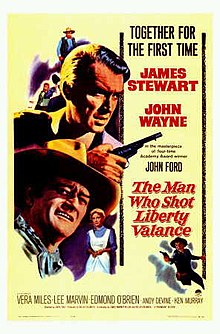Billing (performing arts)
Billing is a performing arts term used in referring to the order and other aspects of how credits are presented for plays, films, television, or other creative works.Laemmle wanted Lawrence to be his star attraction, so he offered her more money (US$250 per week (equivalent to $8,175 in 2023)) and marquee billing, something Biograph did not allow.This, combined with changes in union contracts and copyright laws, led to more actors and crew members being included in the credits sequence, expanding its size significantly.Well-known actors may be given top billing for publicity or contractual purposes if juvenile, lesser-known, or first-time performers appear in a larger role: e.g., Marlon Brando and Gene Hackman were both credited before the title in Superman (1978), while Christopher Reeve, the then-unknown actor who played the title character and protagonist, was not, even though Brando only appears in the introduction while Hackman was the main antagonist.It used to be common practice to give top billing based on a person's level of fame, regardless of the significance of their role in the film.The two names appear simultaneously with Newman's on the right side of the screen and raised slightly higher than McQueen's, to indicate the comparable status of both actors' characters (this also features on the advertising poster).If a film has an ensemble cast with no clear lead role, it is traditional to bill the participants alphabetically or in the order of their on-screen appearance.[citation needed] The cast of the Harry Potter films includes many recognized stars in supporting roles who are billed alphabetically, but after the three principals who were initially child actors.In fact, the characters of The Professor (Russell Johnson) and Mary Ann (Dawn Wells) were the only ones whose mention in the opening theme song was abbreviated simply as "the rest" in the show's first season.For the film The Towering Inferno (1974), Steve McQueen, Paul Newman and William Holden all tried to obtain top billing.Today, it has become understood that whoever's name appears to the left has top billing,[citation needed] but this was by no means the case when The Towering Inferno was produced.This same approach has often been used subsequently, including Cruel Intentions (1999), Sky Captain and the World of Tomorrow (2004), and Righteous Kill (2008) starring Robert De Niro and Al Pacino.That same year, Raúl Juliá requested above the title billing alongside Robert Redford and Lena Olin for the drama Havana.Eleven years later, Don Cheadle did exactly the same thing when his name was not allowed to appear above the title in Ocean's Eleven (2001), presumably because his name would have alphabetically preceded George Clooney's and, unlike with the later sequels, the cast above the title was presented alphabetically (Clooney, Matt Damon, Andy García, Brad Pitt, and Julia Roberts).However, after Jamie Foxx won an Academy Award he demanded top billing and received it despite his role actually being much smaller than Farrell's.[citation needed] One of the first "and-as" credits was given to Spencer Tracy ("as Lieutenant Colonel James H. Doolittle") in the 1944 World War II film Thirty Seconds Over Tokyo, since another top box office star of the time, Van Johnson, had top billing, but Tracy was too big a star to receive second billing.Some examples include: Other unbilled roles feature famous actors or actresses who pop up in a movie as a face in a crowd, a man on a bench, or other 'background' characters, who are given screen time for a brief, but recognizable, moment, such as Bing Crosby and Bob Hope momentarily appearing in a circus audience during The Greatest Show on Earth.[citation needed] An example of this is James Cagney being clearly glimpsed during the opening scenes of MGM's Mutiny on the Bounty (1935) starring Charles Laughton and Clark Gable.Cagney was contracted to Warner Bros. at the time and was arguably their biggest star but appears briefly as an unbilled and presumably unpaid extra at the beginning of the rival studio's seagoing epic.The WGA's rules also outlines when credits can be apportioned separately for the story, and for the screenplay itself when all writers were not equally involved in the creation of both.[21] If the main credits occur at the beginning, then the director's name is last to be shown before the film's narrative starts, as a result of an agreement between the DGA and motion picture producers in 1939.[26] Inclusion in the credits and the billing block is generally a matter of detailed contracts between Hollywood labor unions representing creative talent and the producer or film distributor.


marqueeChapel Hill, North Carolinaperforming artscreditsactorsdirectorsproducersstar systemMary PickfordCharlie ChaplinBiographFlorence LawrenceBiograph girlCarl LaemmleIndependent Motion Picture CompanyThe Broken Oathstudio systemclosing creditsStar WarsThe GodfatherGhostbustersGhostbusters IILethal Weapon 2The AbyssThe Passion of the ChristAvatarInceptionfilm studioPossessory creditsMain castCasting director(s)Composer(s)Visual effects supervisorCostume designerFilm editorProduction designerDirector(s) of PhotographyProducer(s)Executive Producer(s)Screenwriter(s)Director(s)studioproduction companyThe China SyndromeColumbia PicturesMichael DouglasJane FondaJack LemmonJames BridgesPossessory creditRidley ScottOtto PremingerDavid LeanJohn FrankenheimerVictor FlemingJames WhaleKevin SmithTop Billing (TV programme)trailerspostersbillboardsTV spotsMarlon BrandoGene HackmanSupermanChristopher ReeveApocalypse NowRobert DuvallMartin SheenAl PacinoMaximilian SchellJudgment at NurembergSpencer TracyBurt LancasterRichard WidmarkMarlene Dietrichbit partPeter O'TooleLawrence of ArabiaWilliam WarfieldOl' Man River1951 film versionShow BoatPaul Robeson1936 film versionThe Towering InfernoSteve McQueenPaul NewmanChicagoRenee ZellwegerCatherine Zeta-Jonesensemble castA Bridge Too FarHarry PotterKenneth BranaghHamletDerek JacobiJulie ChristieKate WinsletThe Wizard of OzJudy GarlandF. Murray AbrahamAmadeusAntonio SalierisitcomGilligan's IslandRussell JohnsonDawn WellsBob DenverHumphrey BogartThe Desperate HoursFredric MarchBroadwayThe Cincinnati KidEdward G. RobinsonKatharine HepburnClark GableSan FranciscoTest PilotBoom TownWorld War IIThe Bridge on the River KwaiAlec GuinnessWilliam HoldenJack HawkinsThe Man Who Shot Liberty Valance